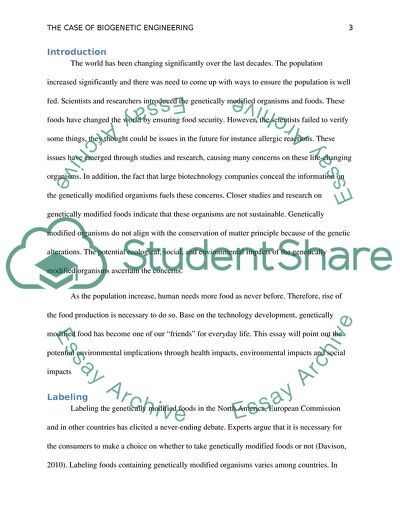Cite this document
(“The Case of Biogenetic Engineering: What are the potential Essay”, n.d.)
The Case of Biogenetic Engineering: What are the potential Essay. Retrieved from https://studentshare.org/environmental-studies/1629954-the-case-of-biogenetic-engineering-what-are-the-potential-environmental-implications
The Case of Biogenetic Engineering: What are the potential Essay. Retrieved from https://studentshare.org/environmental-studies/1629954-the-case-of-biogenetic-engineering-what-are-the-potential-environmental-implications
(The Case of Biogenetic Engineering: What Are the Potential Essay)
The Case of Biogenetic Engineering: What Are the Potential Essay. https://studentshare.org/environmental-studies/1629954-the-case-of-biogenetic-engineering-what-are-the-potential-environmental-implications.
The Case of Biogenetic Engineering: What Are the Potential Essay. https://studentshare.org/environmental-studies/1629954-the-case-of-biogenetic-engineering-what-are-the-potential-environmental-implications.
“The Case of Biogenetic Engineering: What Are the Potential Essay”, n.d. https://studentshare.org/environmental-studies/1629954-the-case-of-biogenetic-engineering-what-are-the-potential-environmental-implications.


